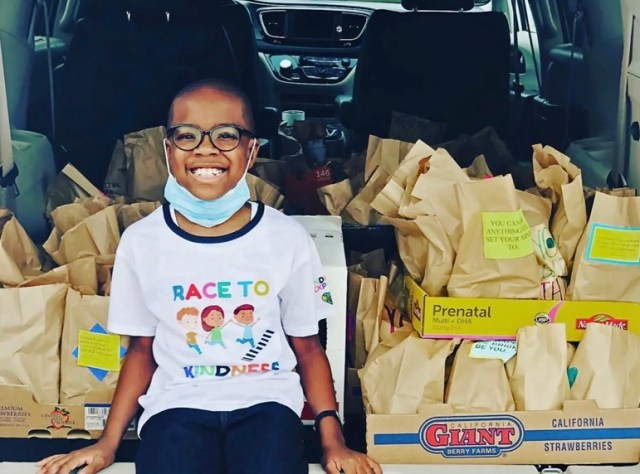My husband ordered me a few books for mothers about parenting when I was in a funk, and all I could do after skimming each of them was chuck them across the room. “Your tribe,” “mommy circle,” “trusted group of friends.” The foundational element of sanity in each book was the same: find other moms you can connect with and share and support one another.
But what if you don’t have mom friends?
Each book explains how and where to find these friends—join a club, class, community events, post on mom meet-up forums—and even realistically explains that it takes time and trial-and-error to find the right people to form genuine connections with.
Right.
Well, not everyone has that. I currently live in a foreign country where I don’t speak the language, and there aren’t any ex-pats in the area with young children. There are no playgroups, clubs or meet-ups, and the majority of the locals send their babies to daycare at a very young age. It wasn’t until my oldest was school-aged, and I enrolled her in an international school, that I saw a bunch of kids under the age of 5.
For four years, I was flying back and forth between countries and changing cities, so making real friends was not going to happen very quickly. Also, as a first-time mom, and now with two kids, my life was 24/7 babies, so there was no time or way to cultivate a social circle with nap schedules, breastfeeding and no family or outside support. I was so overwhelmed with taking care of my children’s needs, maintaining a relationship with my husband and connecting with my parents over the phone, yet I found myself so lonely.
And ya know, that’s a very boo-hoo-sounding first-world problem. I fully recognize the women out there who are too busy and too stressed working 2-3 jobs, living far from or without family. All the fear and stress that consumes their minds to provide the basics probably helps mask the emotional emptiness that having no one to call a friend does to a woman. Solo, overworked moms, I am absolutely in awe of you. I see you.
To be fair, I am a private, unsocial person by nature. I like people, I do, and I am really good at introducing myself and making people feel welcome, but after that, you’ll probably never hear from me again. I hate the follow-up, making a plan, committing to a date. I just can’t do sustained small talk until that acquaintance/friend barrier is broken. I have no childhood friends, school friends, university friends or old co-worker friends I stay in contact with. I am just a loner by nature, I guess.
But motherhood brings out a deep primal need for community, for connection. Not only to have someone to watch a kid for two seconds, or to help do mundane things with like errands, chores, cooking and having play dates, but to have someone who completely knows what it is like—an unspoken understanding so that all the gross, private, personal, awful, wonderful things can be shared with no disclaimers, context or explanations. Maybe I just romanticize what having these sorts of friends must be like, but reading and viewing the volumes of content on the miracles of mom friends, it sounds just magical.
Being a lifelong loner prepared me somewhat, but there was a rough two-year period I thought I would lose my mind from the need for kinship.
So, lonely mama, I know how it feels. I know that deep longing and yearning, all while being completely unwilling or unable to put oneself out there to try to get what it is you feel you’re missing. You can get through it, though, you can. It hurts, and it’s taxing, but it’s possible.
Honestly, I found a lot of comfort imagining the pioneer women who settled far out and away from much else. That sounds very random, but it was a solid example of women who ventured out to nowhere and had to make do with what and who they had. Many managed to raise families on their own, husband aside. If that was possible, what I feel is not unique or impossible to get through now. There are countless examples throughout time and place of lonely mothers who survived, all without self-help books or mommy groups. Maybe some resonate with you.
And in a way, after so long, I kind of like my super tight-knit family unit. It’s manageable. It’s compact. There isn’t any social drama to worry over or handle. I can count my people on the one hand, which is peace-inducing, at least for me. I feel a sense of pride that I am doing this mothering business on my own. Sure, I want some mom friends, but I am strong enough and seasoned enough to know I don’t need them.
I wish I could give an easy self-help-style solution. Yet after chucking so many of those kinds of books against the wall, lamenting that every solution could not be my solution, I know that isn’t always possible. Reading the words of those who feel the same is the most reassuring way to handle some sanity on the hard days. I don’t feel like I need to find you because I know you will find me. So when you type into google looking for solutions for ‘I’m so lonely and ‘I don’t have any mom friends,’ I hope you may unexpectedly land here.
I know you’re lonely, mama, and I am telling you that you can do it, from one loner to the next.
I am an expat, wife, mother, writer, and teacher (in training). Currently living in South Korea, I am married to a Greek, and raising my intercultural girls. Despite being a steadfast introvert, I enjoy writing and sharing my perspectives on motherhood, history and teaching, and life in general.































